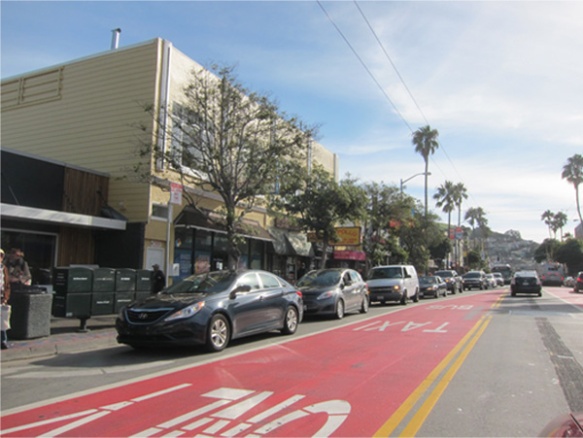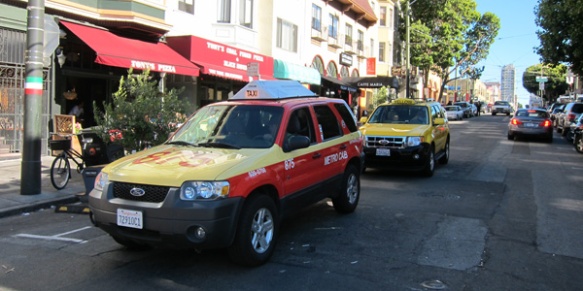
After months of letters, comments and neighborhood pushback against many elements of corporate takeover of our streets and public spaces, many people who shocked by the announcement that some of the Red Lanes in the city are open to use by private enterprise vehicles, such as tech buses, private shuttles, and any vehicle that carries more than 10 riders, based on the definition of a bus.
Supervisor Fewer, among others, scheduled hearings on the use of the Red Lanes that were re-scheduled a couple of times, and reset for early December. As many people were preparing for those meetings, we got the news that recent developments at the Land Use and Transportation Committee may have made those hearings unnecessary. November 5, 2018, Aaron Peskin aide, Lee Hepner, introduced Amendment 18-862, that was passed unanimously to the Full Board by the Land Use and Transportation Committee:
Ordinance 180862 – Ordinance amending Division I of the Transportation Code to establish a procedure for Board of Supervisors review of Municipal Transportation Agency decisions related to Bus Rapid Transit projects that do not include transit-only areas or lanes for Municipal Railway vehicles, taxis, authorized emergency vehicles, and/or Golden Gate Transit vehicles; and affirming the Planning Department’s determination under the California Environmental Quality Act.
The tape of the meeting is below, go to Item 6: http://sanfrancisco.granicus.com/player/clip/31749?view_id=10&meta_id=642988
As a matter of introduction Mr. Hepler described the areas of concern that are under the purview of the Board of Supervisors, though they are not being added to this amendment at this time.
This is a paraphrased transcript of the meeting:
Within the text of Prop A, there is a provision that allows the Board of Supervisors to enact an ordinance that gives the Board the option to review SFMTA decisions regarding various curb space decisions, bicycle lanes, traffic mitigations and measures etc…
Background information: Supervisors Peskin and Safai co-sponsored Ordinance 180089, to enact that review provision regarding curb use. That ordinance expressly exempted certain projects from review that were determined to be public interest projects, such as bike lanes, curb modifications for street sweeping, and bus rapid transit projects.
This new ordinance is taking on elements of the Bus Rapid Transit Projects that are not clearly defined in the code and providing guidance as to the scope of the board’s review authority of these projects. This proposal expresses this board’s desire to promote Bus Rapid Transport projects that are generally designed and implemented to further public transportation reliability.
The amendment clarifies the Board of Supervisor’s policy preference. The board would not review BRT projects that are designed for public transportation use, but would take review of BRT projects designed for use by private commercial shuttles, tour busses or other modes of private transportation that might actually impede the flow of public transportation.
The proposed amendment… replaces the words, “bus rapid transit project” with “bus rapid transit project that includes transit only areas or lanes for municipal railway vehicles, taxis, authorized emergency vehicles, and/or Golden Gate Transit Vehicles.”
SFMTA appears to have collaborated on this. The amendment passed to the full Board of Supervisors as is on the agenda for the November 13 Board of Supervisors meeting. We had no notice, but, this appears to be going through rather rapidly. In this case, that may be a good thing.


